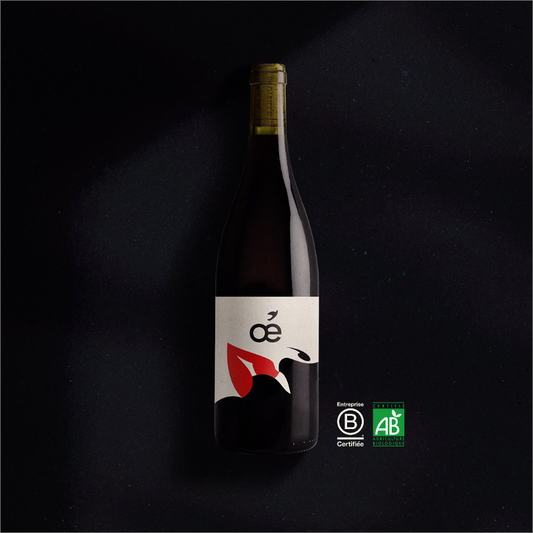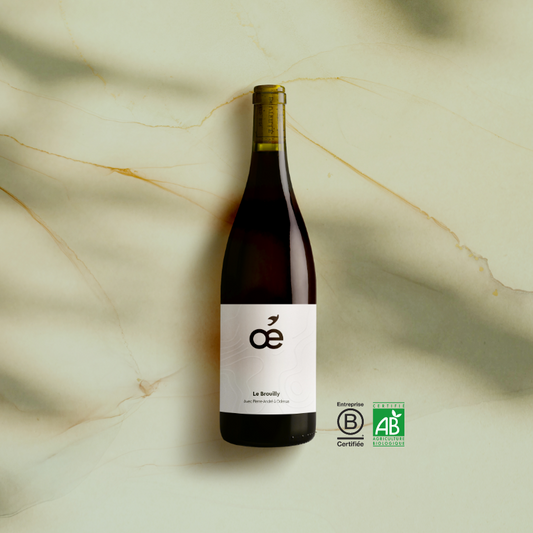Knowing how to taste is not just about being clever, glass in hand, reciting the contents of the bottle's back label. It's just a few steps, a few gestures, that will allow us to identify and understand the contents of our glass through our senses.
Why learn to taste?
Quite simply to avoid being fooled when making a purchase, to recognize a corked wine during an evening with friends and above all to better appreciate the wines and their terroirs in general.
How it works ?
There are as many ways to taste as there are wine lovers. But it is important, for a successful tasting, to have the right tools and to respect certain points:
- First, we choose the right glass (not grandma's dusty balloon glass): the most versatile? An INAO (National Institute of Origin and Quality) stemmed glass in the shape of a high tulip, usable for all types of wine. If we want to go a little further, we will use larger glasses for red wines especially, which will allow them to open up and reveal all their aromas more easily.
Oé: do good with good, uncork good organic wines!
Info: You hold your glass properly, that is to say by the stem and not by the container, which would only have the effect of heating it up!
- We do a temperature check-up: wine is very sensitive to serving temperatures and storage conditions. Thus, even a very grand cru stored in a warm and sunny room, for example, will lose its freshness and liveliness. So we avoid overheating the room or turning on the air conditioning in the room where we keep our wine like the one where we taste! The ideal for tasting is a room where the temperature is between 18 and 20 degrees.
Service temperatures:
- White wine: 8 -10°
- Natural sweet wine (muscat type): about 6°
- Light red wine: around 13°
- Full-bodied red wine: about 15°
- Sparkling wine: 6–8°
Come on, now let's get to the practice!
- Step 1: We observe the wine
As when meeting a person, the first contact is visual. We observe her dress by leaning her glass slightly, in order to have a first glimpse. And at this precise moment, like Sherlock Holmes, we investigate, looking for clues that will allow us to find out more about the contents of the glass: what is the color of her dress? Is its color dark or light? Is it opaque or rather clear? Is it rather thick, slightly syrupy? Is there any deposit in the glass? Is it sparkling? Once the clues have been identified, we move on to the investigation!
Oé: do good with good, uncork good organic wines!
For white wines : if a white wine has a very light yellow color, almost limpid or pulling on the glass, it is highly likely that it is a young wine. On the contrary, an old white wine will have a yellow-orange color. If it looks rather thick and syrupy in the glass, it will be a natural sweet wine.
For red wines : If it is rather clear, it is a light wine. If it is dark, almost opaque, it will probably be a full-bodied and powerful wine. A red wine tending towards purplish will rather indicate a young wine, tending towards orange it will be a wine with many years of bottle behind it.
- Step 2: We identify the aromas, the nose
You swirl your glass clockwise to aerate it and lean over the glass to smell it. First, we will find out if the wine has a defect: the most common being the taste of cork, recognizable by a smell of rotten wood or mold. You can check if the wine has no cork problem during uncorking, by observing and smelling the cork directly. Then, we try to find the nose of the wine: we focus on the flavors it releases. It can be aromas of spices, fruits but also more mineral or saline scents.
- Step 3: Use your imagination
We take a small sip of wine that we turn in our mouth for a few moments and we focus this time on its texture and what we feel.
There is no shortage of adjectives to talk about a wine from every angle: silky, full-bodied, mineral, radiant, tannic, lively, fat, ample, full-bodied... The easiest way is to compare the aromas of a wine to an image or a food (fruit for example). For example, if we taste a powerful red wine, we can imagine a very muscular, well-built person. Another example, a white wine in which we find saline aromas can send us back to the image of sea air like the sea, of iodine.
But rather than learning a lexicon by heart, you have to keep in mind that the important thing is to trust your senses as well as your emotions. First feel the wine and then call on your knowledge, but in any case, being a novice does not prevent you from mastering the simple basics of tasting.
By Emma — Blog La petite robe wine
A dress to wear, a dress to taste.
Fashion, wine and discovery blog lapetiterobewine.wordpress.com





